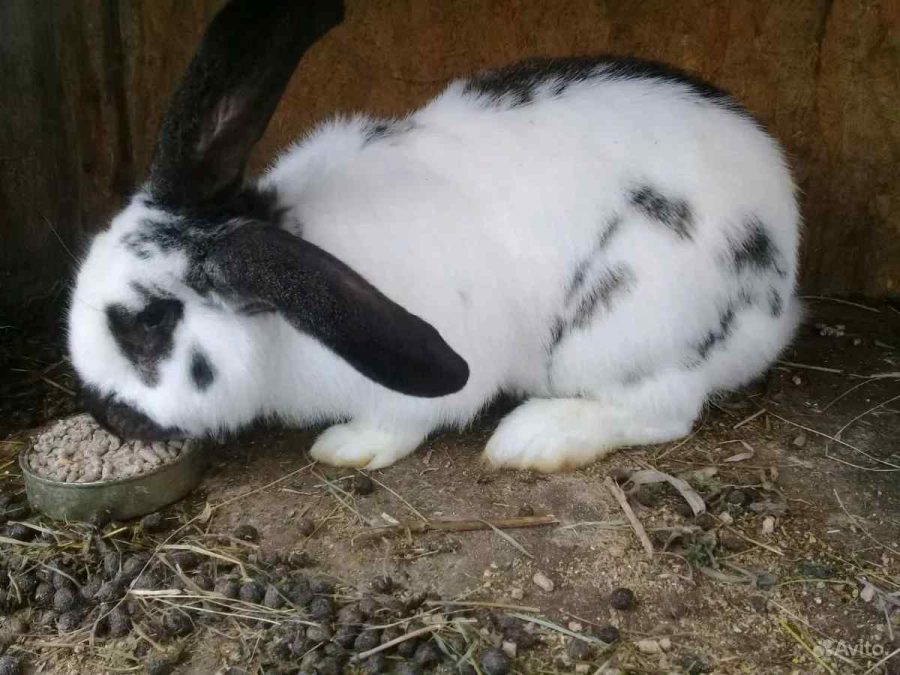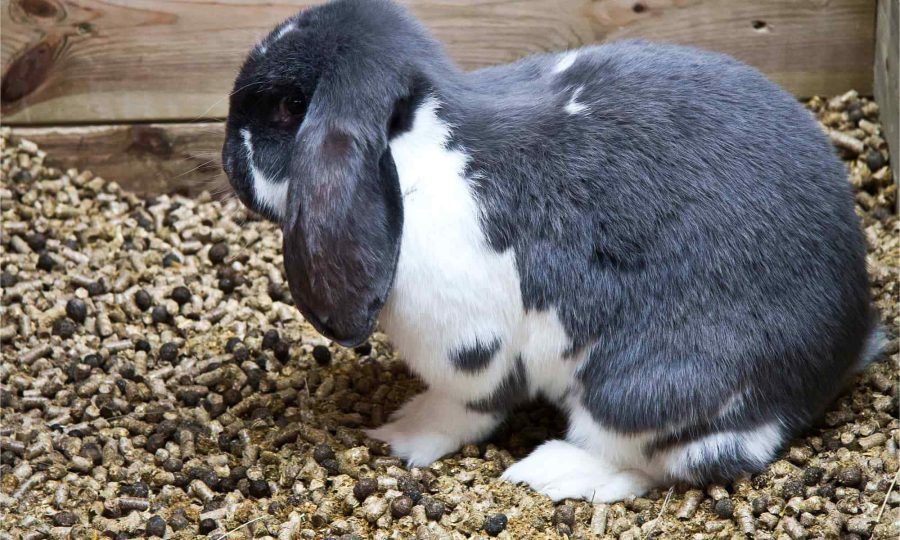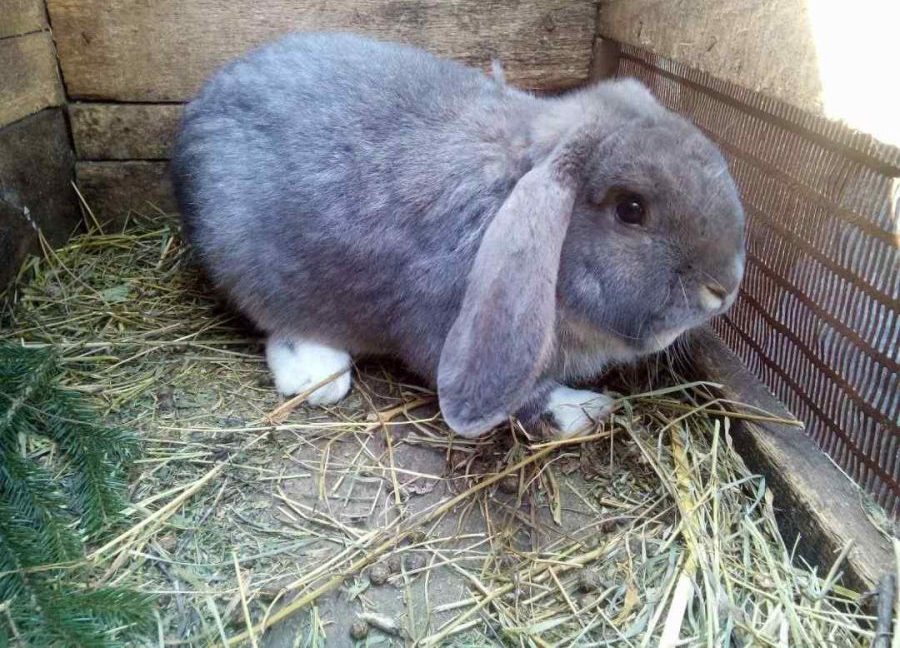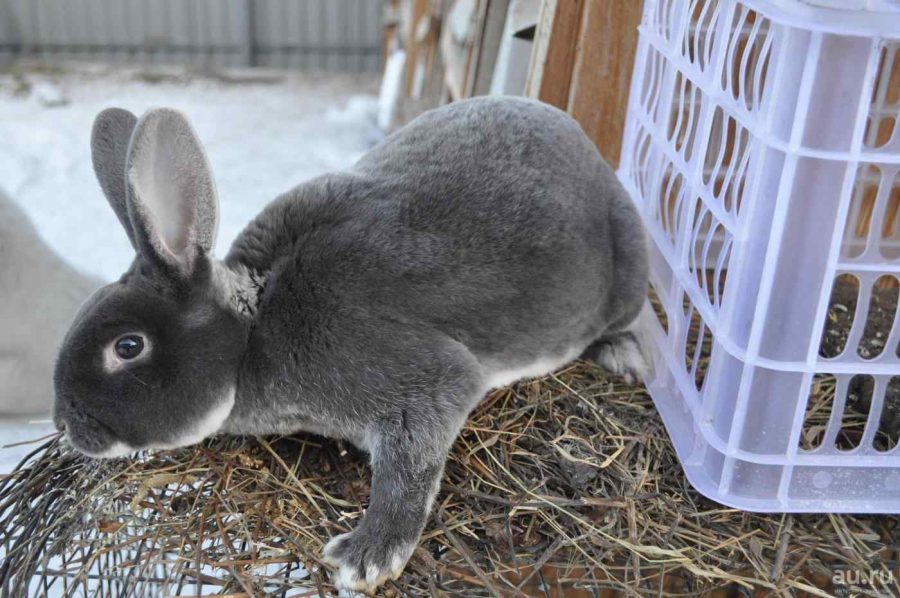Have you ever found yourself pondering over the curious case of rabbits poop pellets? Perhaps you’ve wondered, “Why does Fluffy’s waste look like tiny eco-friendly beads?”
As your friendly neighbourhood veterinarian, I share your fascination with these small but telling signs of health.
Let’s hop down the rabbit hole together to unlock the mystery behind our fuzzy friends’ pellet-shaped poop. We’ll explore the incredible journey from leafy greens to neat little nuggets, guided by the biology that fuels these lovable lagomorphs.
It’s more fascinating than you’d think, promise! So, buckle up, we’re about to embark on a scatological adventure like no other.
In a hurry? Here’s a quick & short answer that will help you save some time:
Rabbits produce pellets due to their unique digestive system. They eat a high-fiber diet and their fecal matter comprises undigested hay fibers, formed into compact, round pellets.
Moreover, rabbits practice coprophagy, re-ingesting some pellets (cecotropes) to maximize nutrient absorption. This dual-process ensures efficient digestion and nutrient utilization.
Related : How Do Rabbits Travel?
Anatomy And Physiology Of The Rabbit Digestive System

A rabbit’s digestive system is akin to a well-oiled machine. With its many components working in tandem to break down food and extract the nutrients to provide sufficient energy for survival.
The rabbit’s gastrointestinal tract consists of several organs that each play an essential role in digestion. The stomach, small intestine, large intestine, cecum, and rectum.
Muscular tubes connect each of these organs, and they work together to move food through the gastrointestinal tract at different rates as needed.
The stomach is the primary organ for breaking down proteins into amino acids using hydrochloric acid and enzymes produced within it. Food then moves from the stomach to the small intestine, where vitamins and minerals are absorbed directly into circulation.
Fats also undergo further breakdown here before entering into circulation via absorption by capillaries located around the walls of this organ.
Rabbits have pellet stools because water is reabsorbed by indigestible material like fiber un the large intestine. These pellets consist mainly of undigested plant matter.
Further fermentation occurs because of bacteria in this part of the gut resulting in fatty acids and other compounds contributing to a healthier balance between good and bad gut microbes.
Finally, the waste moves on to the cecum, where specialist microbes digest cellulose-rich plants to an even greater extent. This process produces additional nutrients required for optimal health.
With all these processes combined, rabbits can effectively utilize whatever they consume while simultaneously expelling excess waste as pellets instead of liquid stool like omnivores or carnivores do.
This allows them to conserve precious hydration and gain maximum nutrition from their diet without having to overeat large amounts of food compared to other animals.
With different dietary needs and transitioning now into exploring how cellulose-rich plants factor into a healthy rabbit diet.
The Role Of Cellulose-Rich Plants In Rabbit Diet
Rabbits are well-known for their particular diet, relying heavily on cellulose-rich plants. This combination of grasses and other vegetation is essential to the health of rabbits. As it provides them with a range of nutrients and fiber they need to survive.
As a result, understanding the role of these plant materials in rabbit diets is essential. The first component of any successful rabbit diet is fresh hay or grass.
These sources provide an abundance of dietary fiber that helps prevent gastrointestinal issues such as constipation and bloat while helping maintain strong bones and teeth.
Additionally, hay offers vital vitamins and minerals, including phosphorus, magnesium, calcium, and vitamin A. In short, hay forms the foundation for a healthy rabbit’s diet.
Other vegetables should also be included in a balanced diet for rabbits. Vegetables like carrots and celery can offer additional dietary benefits compared to hay alone. Carrots are excellent sources of beta-carotene and Vitamin C, both critical micronutrients for optimal digestion in rabbits:
- High amounts of insoluble fibers found in carrots help stimulate digestive system motility
- Beta-carotene supports general immune system health
- Vitamin C assists with the absorption of iron from food intake
In addition to providing necessary vitamins and minerals. Selecting quality produce ensures your pet receives maximum nutrition without added sugar or preservatives often found in processed foods.
Taking care to choose only organic fruits and veggies. Ensures your furry friend has access to healthy snacks throughout the day.
By carefully monitoring what rabbits eat, we can ensure they receive all the nutrients required for proper biological function. Laying the groundwork for specialized digestion systems this species needs.
Related: What Do Rabbits Like To Sleep On?
The Necessity For Specialized Digestion

Rabbits have adapted to survive on a diet of primarily cellulose-rich plants, which are difficult for other animals to digest. This is due to their specialized digestive system that includes several unique processes and adaptations.
To adequately absorb the nutrients from these rigid plant materials, rabbits must employ three stages of digestion. Foregut fermentation in the cecum, caecotrophs (soft fecal pellets) formation, and reingestion.
The first stage of digestion takes place in the rabbit’s cecum. Located at the junction between its small and large intestines.
The cecum houses bacteria that break down cellulose into simpler molecules, such as fatty acids, through anaerobic fermentation.
These molecules travel further along the intestines, where they can be absorbed by the body. In order for this process to work effectively, however, rabbits need to consume a high amount of fiber daily.
Typically more than 10 times higher than most omnivorous species. Resulting in a much larger volume of food intake per day compared with their size.
Therefore, it is essential for them to have a long period of time dedicated solely to eating during daylight hours. So that they can ingest enough fiber before nightfall when they become inactive again until dawn.
To maximize nutrient absorption while minimizing energy expenditure associated with defecating hard feces. Rabbits produce soft fecal pellets called “caecotrophs” or “night feces” overnight and reingest them directly from their anus without chewing.
This method aids digestion because not all chemicals are digested on the first transit through the digestive tract.
Instead, they must first undergo extra processing within the lysosomes of the cells that line the intestinal wall.
In addition, reingesting cecropia helps ensure adequate intake of vitamins B12 and K. Which would be useless if the body just regularly passed regular, hard feces throughout the day.
This complex digestive system has enabled rabbits to exploit resources many other herbivores cannot access. Making them one of nature’s most successful survivors among mammals living in harsh environments today.
As we explore the process of caecotrophy – how rabbits utilize their specialized digestive systems. We will gain an even greater appreciation for how resilient they are under sometimes unfavorable conditions.
The Process Of Caecotrophy
Caecotrophy, or reingestion of feces, is a process that occurs in many lagomorphs, such as rabbits. Some researchers have hypothesized that caecotrophy helps animals get more nutrition out of their food.
Rabbits produce two types of fecal pellets: hard and soft. The indigestible plant cell walls and fibers make up the bulk of the hard pellet. It travels undigested through the digestive system at a reasonable clip.
On the other hand, the soft pellet consists mainly of partially digested material with higher nutritional value than the hard pellets.
The rabbit will ingest these soft pellets when excreted directly from their hindgut in a process known as coprophagy.
Cecal bacteria secrete digestive enzymes that the body can only use for a short time after digestion, making this behavior critical for nutritional absorption.
In addition, bacteria within these soft pellets may also aid in proper digestive functioning for better nutrient absorption.
In addition, caecotrophy involves secondary fermentation, which completes the breakdown of cellulose that primary fermentation left unfinished, leading to more efficient utilization of food energy.
Due to a lack of suitable microorganisms within the stomach or small intestine stage before entering into the large intestine area where the most bacterial activity takes place.
Therefore, reingestion aids in maximizing nutrient extraction from foods that would otherwise pass through too quickly for adequate assimilation prior to elimination through faeces.
For rabbits to effectively use their diets, both ingestion, and reingestion must occur regularly. If not, shortages in digestion-related nutrients such vitamins, minerals, and beneficial bacteria might become apparent.
Without regular caecotrophy, rabbits cannot survive long-term at optimal health levels allowing them to live healthier lives in the future into adulthood.
Transitioning into reingestion of soft feces provides another layer towards understanding. How rabbits maintain themselves through careful selection and consumption habits leading up to proper excretion processes.
Involved in eliminating waste products externally and taking in nutrients internally at every stage of the eating process.
Reingestion Of Soft Feces

Rabbits are very prolific excretors, and their feces pellets are often a source of amusement. On average, a single rabbit can pass up to 750 pellets per day.
Equivalent to more than 200 kilograms of droppings over its lifespan! This pattern is due mainly to the reingestion of soft feces by rabbits.
Reingestion occurs when rabbits eat food and then excrete it through their digestive system as softer waste material called cecotropes. The cecotropes contain essential nutrients like protein and B vitamins that rabbits need for good health.
So they will often consume them directly from the anus. In this way, rabbits can benefit from additional nutrition without expending any extra energy.
The process of reingestion also serves another purpose: compaction into dryer pellet form for more accessible transportation and storage. When rabbits digest their food again with the help of bacteria in their stomachs.
More digestion is needed before the feces are wet enough to be discharged from the rectum as entire granules, rather as watery stools with half solid mushy lumps, which makes defecation more difficult.
This allows them to conserve energy while still moving around freely and transporting their scat away from where they live and feed.
This behavior has several benefits for the animals and humans who keep them as pets or raise them on farms since it reduces odor and makes cleanup much more uncomplicated.
It also helps prevent the spread of disease caused by parasites found in wetter forms of waste matter, such as worms or coccidia eggs. Present in unprocessed stool samples collected from infected individuals or colonies living together in close quarters.
Cleanliness is critical to keeping these populations healthy and productive! Understanding how reingestion works are essential to managing wildlife habitats responsibly and efficiently.
Compaction Of Fecal Pellets
Rabbits’ feces are a form of gastrointestinal waste. Feces consisting of partially digested plant stuff that are so firm that they almost retain their original shape and texture when dropped.
The hardness of these fecal pellets allows them to stay intact in the environment for longer than other types of animal waste. Allowing them to serve an essential role in nutrient cycling within the ecosystem.
It is speculated that rabbits’ ability to make hard fecal pellets evolved over time as a means of conserving energy during digestion.
By compacting plant matter more efficiently, rabbits can extract more significant amounts of nutrients from food sources with less energy expended during digestion.
Because less water is lost during pellet formation, water conservation increases and nutrient uptake improves.
The compaction process itself occurs through several physiological mechanisms:
- Specialized muscles contract around ingested food particles, causing strength changes in cell walls and leading to increased firmness.
- Saliva from glands near the mouth is added to bind molecules further and cause clumping. Resulting in denser pellets with enhanced stability compared to unprocessed material.
- Bacteria residing in the gut break down remaining organic components into smaller pieces which become tightly packed together before exiting the body via defecation.
These combined processes allow rabbits to benefit from their diet without expending too much energy or fluid reserves during digestion.
Consequently, this evolutionary trait has facilitated their success as prolific herbivores across many different environments throughout history.
A transition sentence smoothly moving into ‘the role of fecal pellets in nutrient extraction‘ could be: Understanding how rabbit feces form provides insight into their unique ability to capture essential nutrients from plants more effectively than other species.
The Role Of Fecal Pellets In Nutrient Extraction

The research of rabbits in an enclosed setting is illustrative of the importance of feces in nutrient extraction.
In this experiment, researchers observed that when given access to food sources with varying levels of nutritional value. The rabbits would produce different amounts and densities of fecal pellets depending on their diet.
This phenomenon can be broken down into three distinct parts:
- Absorption of Nutrients: Before being expelled as waste, the rabbit’s system of digestion takes nutrients from the food particles it has consumed. As the quality and quantity of dietary intake varies, so does the amount and type of nutrients the animal absorbs.
- Fecal Pellet Production: This process involves compressing undigested material (such as fiber) into small dry balls. Which are then expelled through defecation. By doing so, rabbits can extract more energy from their diets than if they passed unprocessed waste material through their systems.
- Nutrient Recycling: Through pellet production. Rabbits are able to recycle some of the nutrients contained within their feces back into the environment. This helps maintain healthy soil conditions while providing essential nourishment to nearby animals who may feed off these droppings.
By studying how animals interact with their environments using methods such as pellet production. We gain insights into how species have adapted to maximize their ability to glean sustenance from available resources.
These findings offer valuable clues about better managing our relationships with nature for mutual benefit. With this understanding, it’s now possible to consider potential ecological implications stemming from worldwide pellet production among wild populations.
Related: How Long Do Lop-Eared Rabbits Live?
Ecological Implications Of Pellet Production
Rabbit pellet production has important implications for the natural environment. The high nutrient content of rabbit pellets makes them an important food source for other animals, primarily those that feed on detritus and insects.
This includes birds, reptiles, amphibians, and small mammals like mice and voles. Rabbit pellets provide a vital energy source to these species and essential nutrients such as nitrogen and phosphorus.
In addition to providing sustenance for other species, rabbits are responsible for dispersing seeds from plants they consume through their digestive tracts when producing droppings.
As a result, new plants can sprout hundreds or thousands of miles away from where the initial plant seed was used.
As a result, this process contributes to biodiversity in the area by introducing different types of vegetation into habitats previously dominated by one type of plant life.
The presence of rabbit droppings can also affect soil fertility due to their high nitrogen and phosphorus content levels. When deposited onto the ground surface, these fecal deposits form aggregates that hold moisture better than bare soils and improve aeration and drainage.
These aggregates’ improved conditions allow beneficial microorganisms to thrive in soils near areas with higher concentrations of rabbit pellets.
In turn, these microbes help break down organic matter into more readily available forms of nutrients required by plants for healthy growth and development.
Studies in a variety of environments throughout the world have shown that rabbit poop pellets has a significant impact on both animal numbers and soil quality.
Pellet production is thus an essential ecological factor when studying the dynamics between human activities, local wildlife populations, and global environmental change processes.
Conclusion
Thanks to their specialized digestive system and ability to extract nutrients from cellulose-rich plants, rabbits are remarkable.
Caecotrophy is a mechanism through which rabbits recover nutrients normally lost during digestion by eating their own soft feces before they harden into fecal pellets.
Fecal pellet production also has important ecological implications: one study found that wild rabbits excrete around 20% of all plant biomass consumed as fecal pellets, providing a valuable source of fertilizer for the environment.
This fascinating adaptation is a testament to how animals have evolved unique ways of converting food sources into energy.





